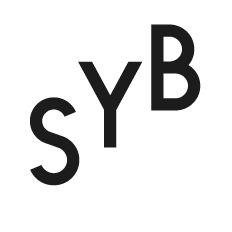9 May till 19 June 2012
SKETCH OF THE LANDSCAPE
Review by Yasmijn Jarram
translation: Jenny Wilson
“When I describe a landscape, you envisage a landscape as a painter would prepare his canvas.” This thought, one of the many that the visual artist Ruth Verraes (BE, 1980) closely adhered to during her six week stay at SYB, runs as a connecting thread through her research project, Sketch of a Landscape. Verraes, based in Amsterdam, works with language, photography and video. She is chiefly interested in the relationship between image and language: as lingual people would we see our environment differently if we went by our senses instead of on ‘agreed’ facts and given names?
She researches this theme in Sketch of a Landscape with ‘the landscape’ as a starting point. This word immediately evokes a particular image, although it will differ per person what this landscape looks like. Verraes questions what will happen if you describe an existing landscape to someone else. It is impossible that the description of the landscape will be exactly the same as the actual landscape. This also goes for the landscape imagined by the listener. In fact, three landscapes arise: the real, the described and the imagined landscape. They refer to each other, but never truly correspond in appearance or form.
Just as this thematic, Verraes’ elaboration of this is as complex as it is simple. In the first weeks of her stay she made various works that imagined, in an associative manner, an aspect of the landscape around Beetsterzwaag, such as water, fields, grass and wind. She used image as well as language for this. The entirety of landscape fragments can be seen in an installation at SYB. Furthermore, for the presentation of the research project, Verraes invited fellow artists Mathilde van Beekhuizen, Lotje van Lieshout, Richtje Reinsma and Arthur Stokvis to describe several works in front of an audience, on the basis of photographs they had previously received by email.
The four guests alternately recited fragments of their descriptions. Particularly striking was that the female artists selected the same work (among others) with the line “It seems that he was bored by his trip through the mountains.” It is remarkable how quickly description blends with interpretation. Lotje van Lieshout is no lover of mountainous landscapes and can well-imagine ‘his’ boredom. Mathilde van Beekhuizen especially identifies with the disappointment of a boring landscape, which had seemed so exciting in the imagination beforehand. According to Richtje Reinsma their mutual choice has to do with the openness of the work, allowing the private imagination to have free rein. Arthur Stokvis point out that, what’s more, a finished work commands a judgement of quality far more easily than a description alone.
From listeners’ reactions at SYB it also appears how much imaginary interpretation of language is personally determined. Someone remarks that one of the recitals was clearly describing SYB’s direct environment. Ruth Verraes immediately turns this around: is it not the listener who projects his own familiar environment onto the description? And in imagining some descriptions, are we perhaps already subconsciously influenced by the exhibited works seen beforehand? As soon as something is summed up in language, it often instantly assumes a particular form. A word exists for it, and therefore also a corresponding image in our minds.
Afterwards Verraes is quite rightly pleased with the realisation of her rather theoretical experiment. The performance-esque manner of a recital works well: the audience listens attentively and creates concentrated depictions of what is being described. The personal thoughts, summarised in between by Verraes, also offer an intriguing insight into the working process she underwent at SYB. Therefore the final work is not only about dealing with the landscape and the effect of language, but also about artistic practice itself. The joint audience after-talk full of questions and pondering also contributes to this. All of which grants the project a certain meta-layer.
Verraes has stripped SYB’s environment of its materiality and brought it back to shapes, colours and notions. The imagination, in contrast, is made into something material, because this is what allows the works to exist. Where reality, description and imagination are placed next to each other the landscape will find itself between all of the works, and in all of the works together. When all is said and done, Ruth Verraes thinks out loud in the audience talk about the future of this project. Perhaps in the long run it can be replaced completely by the recited descriptions, so that the landscape only exists of spoken language. Whichever it may be, what counts from now on is that: “The landscape I saw, no longer exists.”
